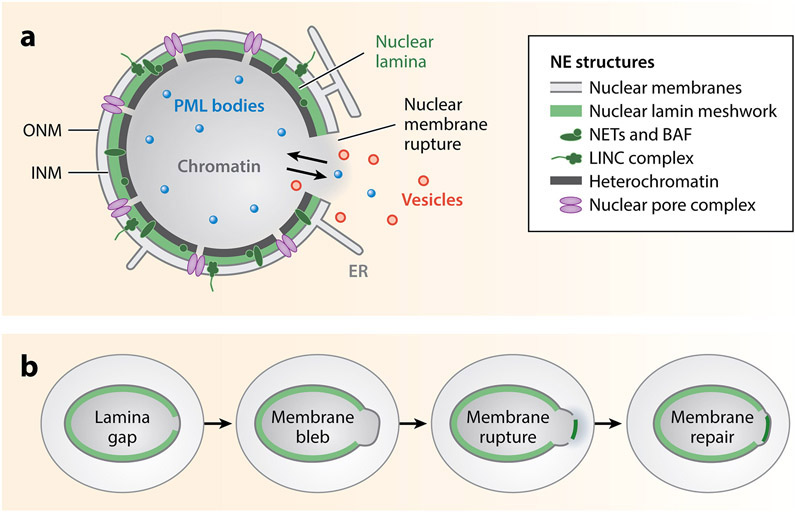Figure 1.
NE structures and membrane rupture. (a) Nucleus undergoing membrane rupture, showing the major NE structures including the membranes, lamina, nuclear pore complexes, chromatin, and peripheral heterochromatin. The nuclear lamina includes the nuclear lamin meshworks, NETs, BAF, and the LINC complex. The nuclear membrane is comprised of the outer and inner nuclear membranes, which are contiguous with each other and the ER. During membrane rupture, a pore is formed in the nuclear membrane that allows the free diffusion of nuclear and cytoplasmic proteins and small organelles, including PML bodies (blue) and vesicles (red) (DeVos et al. 2011, Vargas et al. 2012). (b) Stages of nuclear membrane rupture and repair. Many ruptures begin with the appearance of a gap in the nuclear lamina meshwork, which then becomes the site of membrane blebbing and chromatin herniation followed by membrane rupture when the nucleus is mechanically stressed. A subset of NE proteins (dark green) from the cytoplasm and ER accumulates on the exposed chromatin, along with other cytosolic DNA-binding proteins. These proteins persist at rupture sites even after nuclear compartmentalization is restored in the membrane repair process. This is only one possible order of events. Abbreviations: BAF, barrier-to-autointegration factor; ER, endoplasmic reticulum; INM, inner nuclear membrane; LINC, linker of nucleoskeleton and cytoskeleton; NE, nuclear envelope; NET, NE transmembrane proteins; ONM, outer nuclear membrane; PML, promyelocytic leukemia.

